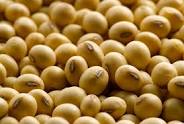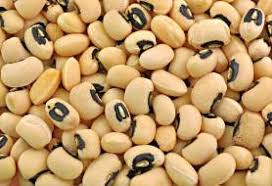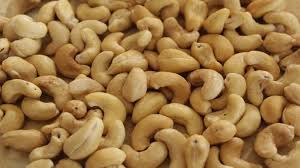Mechanized Soy Bean Cultivation, Cleaning, Packaging and Export in Nigeria; The Feasibility Report.

Nigerian agriculture is characterized by considerable regional and crop diversity. Analysis of this sector, particularly the food sub-sector, is fraught with serious data problems. However, the available statistics provide a broad overview of development in agriculture upon which we can make some broad generalizations about its role in economic development and structural change in Nigeria.
In the 1960s, the agricultural sector was the most important in terms of contributions to domestic production, employment and foreign exchange earnings. The situation remained almost the same three decades later with the exception that it is no longer the principal foreign exchange earner, a role now being played by oil.
The sector remained stagnant during the oil boom decade of the 1970s, and this accounted largely for the declining share of its contributions. The trend in the share of agriculture in the gross domestic products (GDP) shows a substantial variation and long-term decline from sixty percent (60%) in the early 1960s through forty-eight point eight percent (48.8%) in the 1970s and twenty-two point two percent (22.2%) in the 1980s.
Unstable and often inappropriate economic policies (of pricing, trade and exchange rate), the relative neglect of the sector and the negative impact of oil boom were also important factors responsible for the decline in its contributions.
On its diversity, Nigerian agriculture features tree and food crops, forestry, livestock and fisheries. Crops (the major source of food) accounted for about thirty percent (30%) of the gross domestic products (GDP), livestock about five percent (5%), forestry and wildlife about one point three percent (1.3%) and fisheries accounted one point two percent (1.2%).
Soya bean is one of the most common food crops grown and consumed in many parts of Africa. Soy bean (Glycine Max) is classified as an oilseed rather than a pulse. It is a species of legume native to East Asia (China) and still remains a major crop there till today. Prior to its use for fermented food products, soybean was considered sacred for use in crop rotation as a method of fixing nitrogen.
The bean on dry weight basis is twenty-nine percent (29%) oil, forty percent (40%) protein, thirty-five percent (35%) carbohydrate and about five percent (5%) ash. Its protein is heat stable, thus allowing it to withstand high temperature during cooking.
Though production and utilization of soy bean started in the Orient as far back as the 11th Century, this ancient crop became grown in other parts of the world just in the 20th Century. It was first introduced in Europe in the 1700s and in America in 1804 (Katz, 1998).
It was introduced to Africa from China in the late 19th Century and is now widespread across the continent including Nigeria. The earliest known cultivation of soy beans in Africa was in 1896, when they were grown in Algeria, at a government botanical station and later in 1903, when they were grown in South Africa. From 1908, there has being a dramatic and tremendous increasing interest in growing Soybean in Africa, as Europe for the first time began import large quantities of Soybean in response to severe shortages and prices of oil.
By 1982, Soybean and Soy foods, though still played a very minor role in Africa have been identified as having great potentials in arresting the declining per capital food production as well as protein and calorie consumption in the Continent including Nigeria.
Soy bean was introduced into Nigeria in 1908; it was first planted in Ibadan, Oyo State. Initially the crop was cultivated for export with the support and encouragement of Groundnut Board. Nigeria presently produces about five hundred thousand (500,000) MT of Soybean annually making it one of the largest producer’s of the product on the African continent. Soybean is a legume which is produced in most the middle belt of the country with Benue state accounting for about forty percent (45%) of the total production in country.
Soya Bean is a leguminous crop whose importance and economic benefits cannot be over emphasized. Products that can be gotten from Soya Bean include Soy Cake, Soy oil, Full Fat Soya, Soy meal, soy meal, soy flour, soy milk, tofu, textured vegetable protein amongst other things.
This report seeks to examine the financial viability or otherwise of establishing a mechanized soya bean plantation in Benue State, Nigeria. The products harvested would be processed, cleaned and packaged for export.
The size and locations of the farm is four hundred and fifty (450) hectares of land located in Benue State. Four hundred (400) hectares would be used for the farm while the remaining fifty (50) hectares would be used for the construction of the office, warehouse and other civil works.
The farm would use improved seedling (TGX 1448-2E) which matures in four (4) months with two production cycle per annum.
The investor would purchase about five hundred (500) tons of soya beans within the first three (3) months of every production cycle from farmer and traders on a monthly basis. Twenty-five (25) tons of soya beans would fill a twenty (20) feet container.
Table of Contents
EXECUTIVE SUMMARY 1.0 Business Overview 1.1 Description of the Business 1.2 Vision and Mission Statement 1.3 Business Objective 1.4 Value Proposition 1.5 Critical Success Factor of the Business 1.6 Current Status of Business 1.7 Description of the Business Industry 1.8 Contribution to Local and National Economy 2.0 Agricultural Practice 2.1. Varieties 2.1 Planting 2.2 Manures and Fertilizers 2.3 Weeding 2.4 Climate / Irrigation 2.5 Harvesting and Yield 2.6 Herbicides 2.7 Soil Type 2.8 Diseases and Pests 3. Marketing Plan 3.1 Description of product 3.2 Product delivery 3.3 The Opportunity 3.4 Pricing Strategy 3.5 Target Market 3.6 Distribution and Delivery Strategy 3.7 Promotional Strategy 4. Cultivation / Production Plan 4.1 Description of the Location 4.2 Raw Materials 4.3 Cultivation / Production Equipment 4.4 Cultivation / Production Process 4.4.1 Pre-Export Documentations in Nigeria 4.4.2 Post-Export Documentations (Exchange Control Documents) 4.5 Cultivation and Product Cost 4.6 Stock Control Process 4.7 Pre-Operating activities and expenses 4.7.1 Operating Activities and Expenses 4.8 Project Implementation Schedule 5.0 Organizational and Management Plan 5.1 Ownership of the business 5.2 Profile of the promoters 5.3 Key Management Staff 5.3.2 Management Support Units 5.4 Details of salary schedule 6. Financial Plan 6.1 Financial Assumption 6.2 Start - up Capital Estimation 6.3 Source of Capital 6.4 Security of Loan 6.5 Loan Repayment Plan 6.6 Profit and Loss Analysis 6.7 Cash flow Analysis 6.8 Viability Analysis 7.0 Business Risk and mitigation factor 7.1 Business Risks 7.2 SWOT Analysis 8.0 Managing Export Operations
Project Specification:
Additional Info
Get this Report
Direct bank transfer
To order the report, Please do pay the sum of ₦150,000 into
Account Name : Foraminifera Market Research Ltd
Account Number : 274 20 569 37
Account Name : Foraminifera Market Research Ltd
Account Number : 101 76 603 95
Account Name : Foraminifera Ventures
Account Number : 011 66 066 32
Make your payment directly into our bank account. Please use your Order ID as the payment reference. Your order will not be shipped until the funds have cleared in our account.
Instructions
After payment call us on 01 -29 52 413 / 08033782777 or email us at foraminiferamarketresearch@yahoo.com with the payment details. After payment confirmation, the soft copy of the report would be sent to you within 24 hours.



